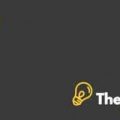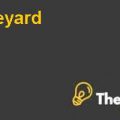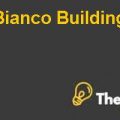Question 1
ATTRACTIVENESS OF CIRCUS INDUSTRY IN THE EARLY 1980 s:
The industry of circus is one of the oldest industries in the world. The aim of the industry is also unique in all aspect. With this unique aim and idea it has attracted many audiences around the globe. The industry has got his start in the year 1768 by Philip Astley. The competition begins to get stronger and stronger year by year. The start of World War II and depression in the economy has made a huge impact on the traditional circus due to which the industry begins to decline until 1969 when Irving Feld purchases the Williams family circus in 1969.
The start of this new era in the circus industry again catches the eye many audiences. The outside circus field transformed into the indoor theater which enables them to move their circus easily everywhere, even across the border. The star performers have been replaced with those who are mostly unemployed and committing to perform in the circus for free with a slight compensation of free tickets. The use of animals has also been limited. Both of the above statements results in a reduce cost and higher profitability.
The shift from the vast avenues to the smaller ones like indoor theaters and streets performance has made the barriers quite low to enter in this industry. The exclusion of stars and inclusion of dedicated, vocational or family members has also reduced the supplier bargaining power. However this conversion of bigger league into the smaller one has increased the number of substitute in this industry, which increases the power of buyer and putting the pressure back to them for reduced prices. The competition has also become intense due to the easiness of entrance in this industry.
The overall attractiveness of this circus industry is therefore relatively low.
| Traditional Approach | Modern Approach | |
| Barrier to entry and exit | High (capital, brand name, star) | Low |
| Bargaining Power Of Suppliers | Strong from big name stars | Low(dedicated, family members) |
| Bargaining Power Of Buyers | comparatively strong (price) | Strong (price & shows) |
| Threats from Substitutes | Strong threat (modern approach) | Comparatively Strong (Tradition) |
| Potential Of Rivalry | Mainly from substitutes | high due to many small players |
Question 2
DIMENSIONS ON WHICH TRADITIONAL CIRCUS COMPANIES COMPETED AGAINST EACH OTHER:
The rivalry continues between these two modern and traditional approaches on many dimensions. The dimension which becomes the element of bitter rivalry includes the following:
Both approaches has their contents of shows upon which the enables them to attract the interest of the crowd. The core contents which the circus has kept and is the reason for rivalry between these two approaches is shows on tour, clowns and juggling skills etc.
The World War II has made many problems for the industry to survive. The amount of labor and their cost is increasing rapidly due to which both the decreasing profitability becomes the major problem between these two. The traditional approach is using the star performers which demands higher returns and this has laid to the increase in ticket prices as well while on the other side the modern approach has taken several steps to overcome the problem by excluding the star performers which may reduce their prices but also the audience as well.
The last one upon which these two approaches become rivals of each other is the ability to travel fast. The traditional circus is a seasonal limited industry while modern approach due to its small league approach can travel faster and removes the seasonal limitation also.
The Evolution of the Circus Industry Case Solution
Question 3
LIKES OR DISLIKES ABOUT TRADITIONAL CIRCUS:
Traditional circus industry is mostly put its reliance on the star performers and animals. The animals are specially trained and made competitive. Therefore, the casting and developments of these star performers is a key element of their business and the whole circus industry.
They are also struggling and doing efforts in order to bring down their logistical and operational costs. The traditional circus seems to be satisfied with this and all companies in this industry are also representing the same value curve. These are the major obstacles that become the barriers of this traditional approach in order to develop and innovate themselves...................................
This is just a sample partial case solution. Please place the order on the website to order your own originally done case solution.











